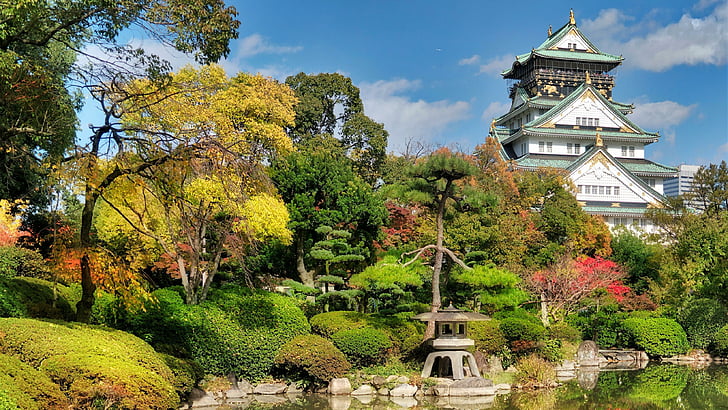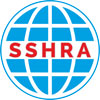CONFERENCE LOCATION
Osaka, Japan

Osaka is located on the main island of Honshu, roughly in the center of Japan. Osaka City, which was incorporated in 1889, has a population of 2.69 million and an area of 225.21 square kilometers. Osaka Prefecture, which includes Osaka City (it's capital) and 42 other municipalities, has a population of 8.84million and a total landmass of about 1,905 square kilometers. Although Osaka is Japan's second smallest prefecture by size, its population represents 7% of the entire nation, making it the second-most populous prefecture after Tokyo. Furthermore, 10% of all non-Japanese residents live in Osaka.
About Osaka
1. Tourism Authority of Osaka — Travel Guide for Osaka
2. Weather in Osaka — Japan Meteorological Department
Once you arrive in Japan, don't hesitate to get in touch with tourism professionals for information and help in organizing your stay.
Tourist Information Centres (TIC)
At various locations throughout the city, these other Tourist Information Centres offer information and recommendations for your stay in Osaka and its surrounding area. Listed below are the main addresses for other TICs in Osaka:
- Kansai International Airport:
-
- Address: 1F Passenger Terminal Kansai Osaka International Airport 1 Senshu-kuko-naka, Tajiri-cho, Sennan-gun, Osaka
- Telephone: +81 (0)7 24 55 25 00
- Website: www.kansai-airport.or.jp/en/service/general/02.html
- Umeda Station:
- Address: JR Osaka Station 1F North Central Gate 3-1-1 UmedaKita-ku, Osaka
- Telephone: +81 (0)6 63 45 21 89
- Website: https://osaka-info.jp/en/page/tourist-information-osaka
- Namba Station:
- Address: Nankai Terminal Building 1F, 5-1-60 Namba, Cnuo-ku, Osaka
- Telephone: +81 (0)6 66 31 91 00
- Shinsaibashi Station:
- Address: South Building 2F of Daimaru Shinsaibashi Store 1-7-1 Shinsaibashi-suji, Chuo-ku, Osaka
- Telephone: +81 (0)6 62 44 71 00
Japan Travel Guide
The official website of the Japan National Tourism Organization (JNTO) provides a wealth of information on Osaka.
- Website: https://www.japan.travel/en/
GETTING AROUND OSAKA
Osaka traffic is fluid and well organized: it is a pleasure for pedestrians as well as for drivers! Regarding public transport, the metro, which is extensive, fast, and reliable, is ideal for exploring the city.
CAR
Traffic in the city of Osaka is generally fluid. It is important to note that a driving license is not valid in Japan if it is not accompanied by a Japanese translation of the document. For this, you must ask the competent authority, the Japan Automobile Federation (JAF), once you are there. For more information, click here. Bear in mind that all traffic signs are only in Japanese!
METRO
Osaka city is crossed by nine subway lines serving its main axes: the Midosuji line, connecting Esaka to Nakamozu; the Tanimachi line (Dainichi to Yao-Minami), the Yotsubashi line (Nishi-Umeda to Suminoe-Koen), the Chuo line (Cosmosquare to Nagata), etc.
The trains run from 5:30 a.m. to 11:30 p.m., approximately (depending on the lines and stations), every two to four minutes during rush hours. The ticket price varies depending on the lines taken and distances traveled (count 200 JPY on average per trip). You can purchase your tickets from vendors present at the ticket counters at stations or buy them in vending machines (also in stations).
TAXI
You will recognize taxis by their green license plates and lit signs placed on their roof. You can hail them in the street or go to the taxi ranks near subway stations. Allow about 700 JPY per kilometer.
BIKE
Unlike Tokyo, Osaka is a human-scale city and you can easily get around by bike. Numerous bike rental agencies are available, especially in the most touristic areas (count JPY 1,000 per day).
Hello / Good morning / Good afternoon: Konnichiwa
Good evening: Konbanwa
Goodbye: Sayonara
Yes: Hai
No: Iye
No, thank you: Iye, kekkō desu
Thank you very much: Arigato gozaimasu
Please: Onegaishimasu
I don't understand: Wakarimasen
Could you repeat ?: Mōichido i tekudasai
What time is it?: Ima nanji desuka?
Sorry / Excuse me: Sumimasen
Airport: Kūkō
Train station: Eki
Taxi: Takushi
Hotel: Hoteru
Hospital: Byo-ine
Bank: Ginkō
Telephone: Denwa
I'm (…): Watashi wa (...)desu.
I'm looking for (…): (...) (…) wo sagashite-imasu.
How much is (…)?: (…) wa ikuradesuka?
Do you have (…)?: (…)wo motte imasuka?
Where can I find (…)?: Doko de (…) wo mitsuke raremasu ka?
Where can I buy (…)?: (…) wa dokode kaemasuka?
I'd like (…): (…) wo shitaidesu
JAPAN ELECTRICITY - CLICK HERE FOR INFO
INTERNET ACCESS
Japan Connected-free Wi-Fi: Wi-Fi is available for free in most hotels and many restaurants, but visitors can venture away from their home base confidently by downloading the Japan Connected-free Wi-Fi app. The app contains a map of available Wi-Fi spots across the city, so tourists can Snapchat from the airport or fill up their Instagram pages from Osaka’s best shopping malls, museums, and historic landmarks.
SIM card: another option for staying connected is to buy a data-only SIM card. Cards are available at Kansai International Airport and Itami Airport. Not sure you want to go all-in right after you land? SIM cards also are available in convenience stores as well as in the IT section of any shopping mall.
Pocket Wi-Fi rental: families and groups can benefit from renting a portable Wi-Fi router. Several companies in Japan offer affordable service and will deliver the device to your hotel, where you can leave it when your holiday ends. Visitors also can rent devices at both airports in Osaka.
FACTS ABOUT OSAKA
- Osaka was once the capital of Japan. Japan's first full-scale palace, Naniwa-no-Miya Palace, was built in 650. The site of the palace is maintained as a park, located south of the current Osaka Castle.
- The current Osaka Castle is a reconstruction. The original Osaka Castle was destroyed in 1615, and its initial reconstruction was destroyed again by lightening in 1665.
- Osaka is the third-largest city in Japan, with a population of over 2.5 million people in its greater metropolitan area. It is the central metropolitan city of the Kansai region and the largest of the Osaka-Kobe-Kyoto trio.
- Osaka is known as the “Nation’s Kitchen,” and is well known for delicious foods such as takoyaki and okonomiyaki. The most famous food district in Osaka is Dotonbori.
- Vending machines are everywhere! It is estimated that about 3% of Japan’s power goes toward powering its 5.5 million vending machines.
- The first Universal Studios theme park outside of the United States was built in Osaka.
- The cherry blossom is the national symbol of Japan. In April, the trees flower for two weeks, during a period known as “Hanami.”
- People from Osaka are said to be the most outgoing in Japan. Many famous Japanese comedians come from Osaka, and many say that Osaka feels more friendly and down to earth than other major Japanese cities.
- The underground shopping complex in Osaka's central district, Umeda, actually has fossils from the Jurassic to Cretaceous periods! If you want to see them, pay attention to the walls of the shopping complex.
- Osaka is the birthplace of Kabuki and Bunraku theatre. The National Bunraku Theatre of Japan provides English translations through headphones.
- The Osaka Kaiyukan Aquarium is the second largest aquarium in the world, and one of Osaka’s most popular tourist destinations.





